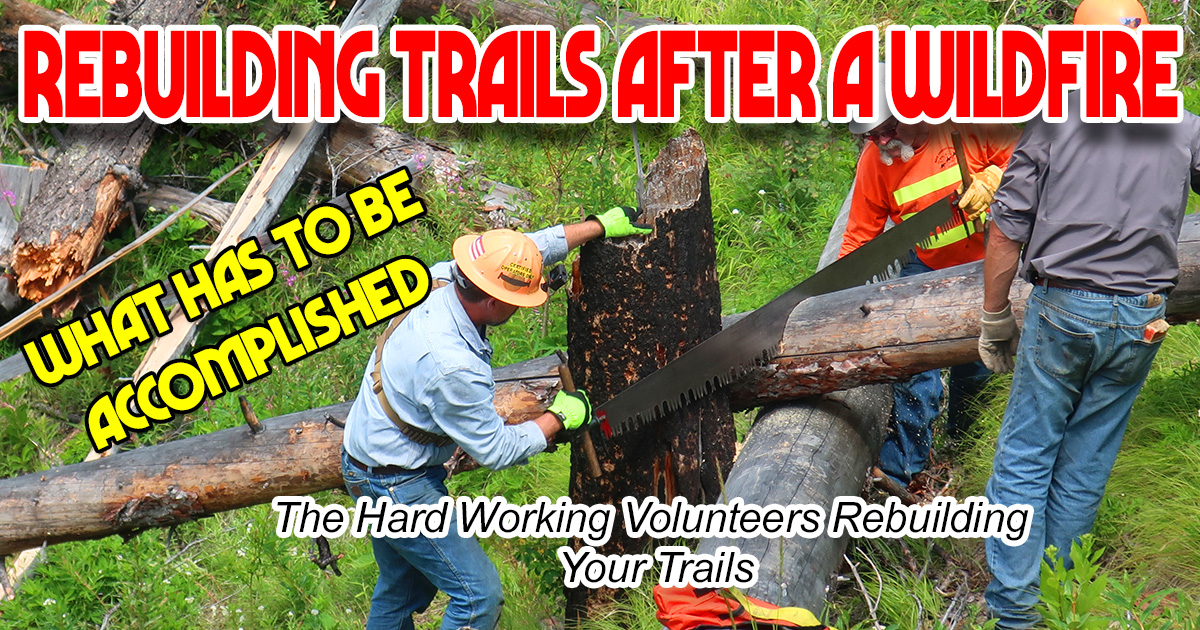Rebuilding Trails after a Wildfire
Unfortunately, it’s a story that repeats itself every year—wildfire racing across the landscape. As forests burn, post-wildfire recovery is becoming the norm for trail maintainers across the U.S. as these fires take a toll on popular recreation areas and natural resources. Rebuilding trails is imperative for continued use.
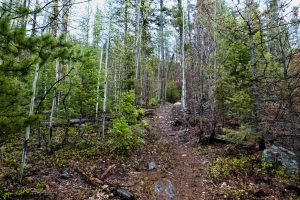 The devastation that comes when you learn of a wildfire burning in a beloved area that holds fond memories is traumatic. Fires can mean a tragic loss of lives or homes. And we’re left wondering what the area will look like once the flames are extinguished. Fire changes an environment; understory vegetation is destroyed, trees are torched, and trails become moonscapes of ash.
The devastation that comes when you learn of a wildfire burning in a beloved area that holds fond memories is traumatic. Fires can mean a tragic loss of lives or homes. And we’re left wondering what the area will look like once the flames are extinguished. Fire changes an environment; understory vegetation is destroyed, trees are torched, and trails become moonscapes of ash.
Wildfire is an essential part of a natural landscape. But it is undeniable that wildfires can negatively impact outdoor recreation resources. In these cases, post-fire restoration can be crucial to prevent further damage and spur recovery.
The already astronomical price tag of wildfire suppression is projected to increase over the next decade. It comes at a cost to other Forest Service programs. Most of the Forest Service’s budget is spent fighting fires, not restoring those acres that have burned. Volunteer efforts are needed to maintain fire-damaged trails.
In the past several years, fire recovery has been an increasing part of Back Country Horsemen’s work to keep trails open and accessible for equine use. BCH crews work closely with land managers to ensure that trail maintenance positively impacts landscapes after a wildfire.
The Work that is Done
If you’re unfamiliar with trail work and rebuilding trails, you might be wondering, “What sort of work is needed on trails after a wildfire, and why is that work so important?”
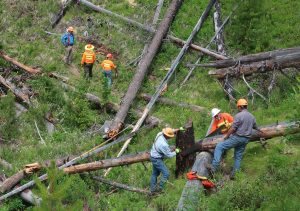
Photo by Kathy Young
When a BCH volunteer team attacks a fire rehab project, the first order of business generally includes removing blow-downs from the trail corridor. Fire-scorched trees with compromised root systems tend to topple due to wind and weather, making it very challenging for those on horseback to get down the trail. Riding around sections of blow creates a maze of “social” trails, increasing erosion of the main throughway. By clearing blow down, we’re making the ride more manageable and more enjoyable, and keeping all users on the same path reduces the impact on the land.
Once the deadfall is removed, tread and erosion control measures are tackled. “Tread” is the trail – the hardened surface our ponies travel on. Tread, as all horsemen know, is frequently studded with roots. Many of those roots burn during a fire, leaving dangerous holes in the tread. Sweating BCH volunteers fill each of those holes to keep the trail safe for stock use.
Erosion control measures are undertaken once the deadfall is cleared and the holes filled. Post-fire trails without these structures can soon turn into vast trenches where the sides of the trail brush against your horse’s belly. These constructions are built with native stone, timber, and sweat.
How You Can Help
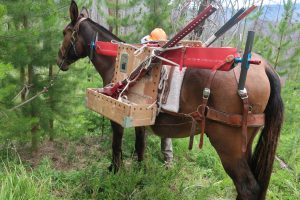
Photo by Kathy Young
Once you understand the work that must be accomplished after wildfire rolls through, it’s essential to appreciate how it is executed. Many BCH volunteer work projects take place in designated Wilderness, where only non-motorized tools are permitted. Wilderness trail work takes you back to a time before mechanization. Fallen trees are removed with crosscut saws powered by muscle, trail tread is re-built with well-worn picks, and water bars are installed with shovels and grit.
The sweat-stained clothes of trail crew volunteers remind us that repairing trails after a wildfire is hard work. Still, the miles of new and improved trails are a valuable reward to every trail user. Please think of the efforts that volunteers put into keeping your trail system open. Consider helping keep your trails open by joining a trails advocacy organization, such as Back Country Horsemen. Even if you don’t have the horsepower to muscle a Pulaski, you can still assist in many ways. Trail work support can be helping coordinate resources and calendars to feeding the volunteers at a base camp.
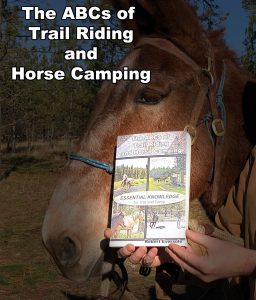 For more information about trail riding and camping with horses visit us at www.TrailMeister.com. TrailMeister is the world’s largest and only accurate guide to horse trails and camps. For more practical tips pick up a copy of The ABCs of Trail Riding and Horse Camping from Amazon. With over 180 topics from trail training to how to plan camping trip it’s the book for beginners and experts alike – https://amzn.to/3QZ5Bp9 .
For more information about trail riding and camping with horses visit us at www.TrailMeister.com. TrailMeister is the world’s largest and only accurate guide to horse trails and camps. For more practical tips pick up a copy of The ABCs of Trail Riding and Horse Camping from Amazon. With over 180 topics from trail training to how to plan camping trip it’s the book for beginners and experts alike – https://amzn.to/3QZ5Bp9 .


